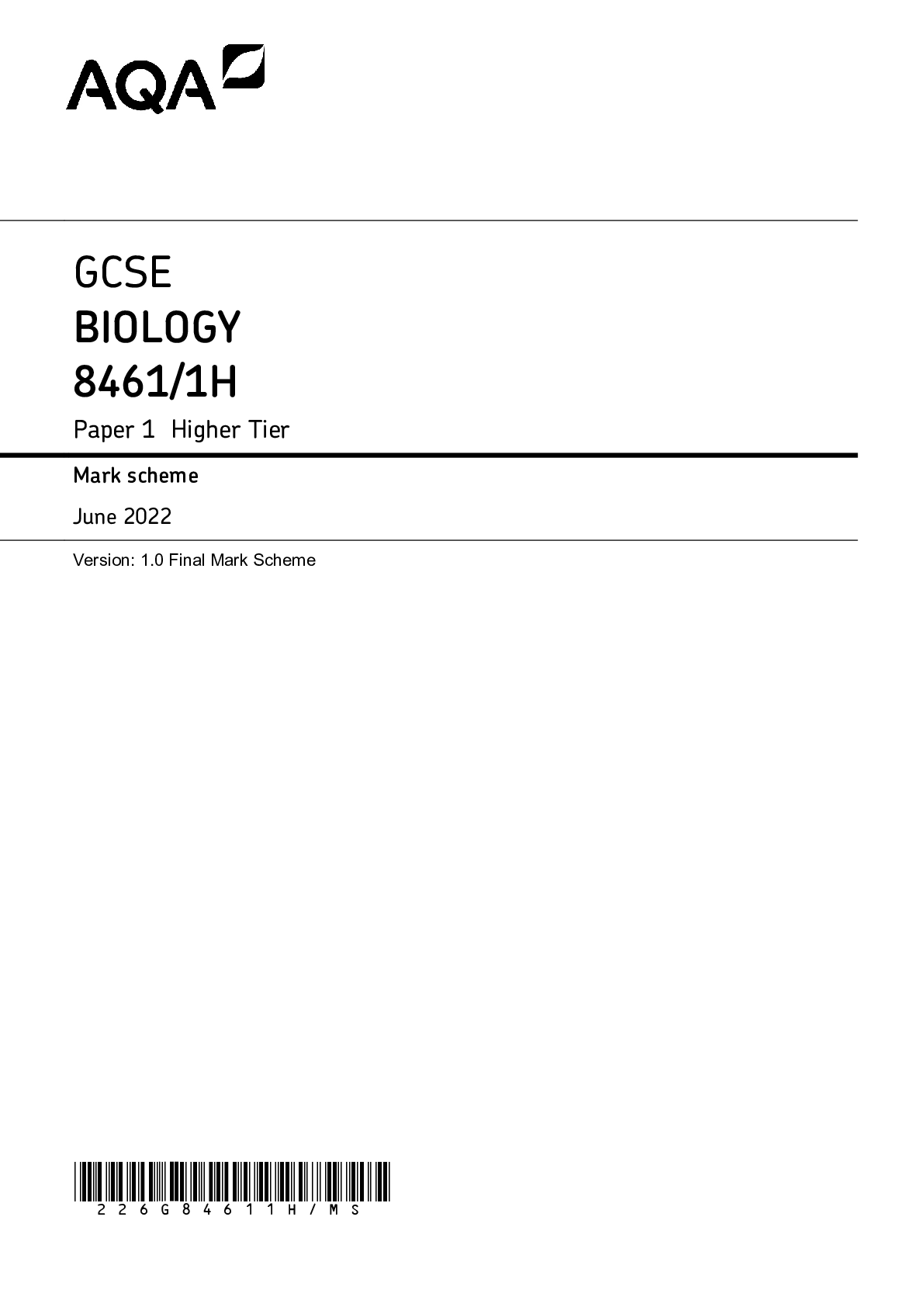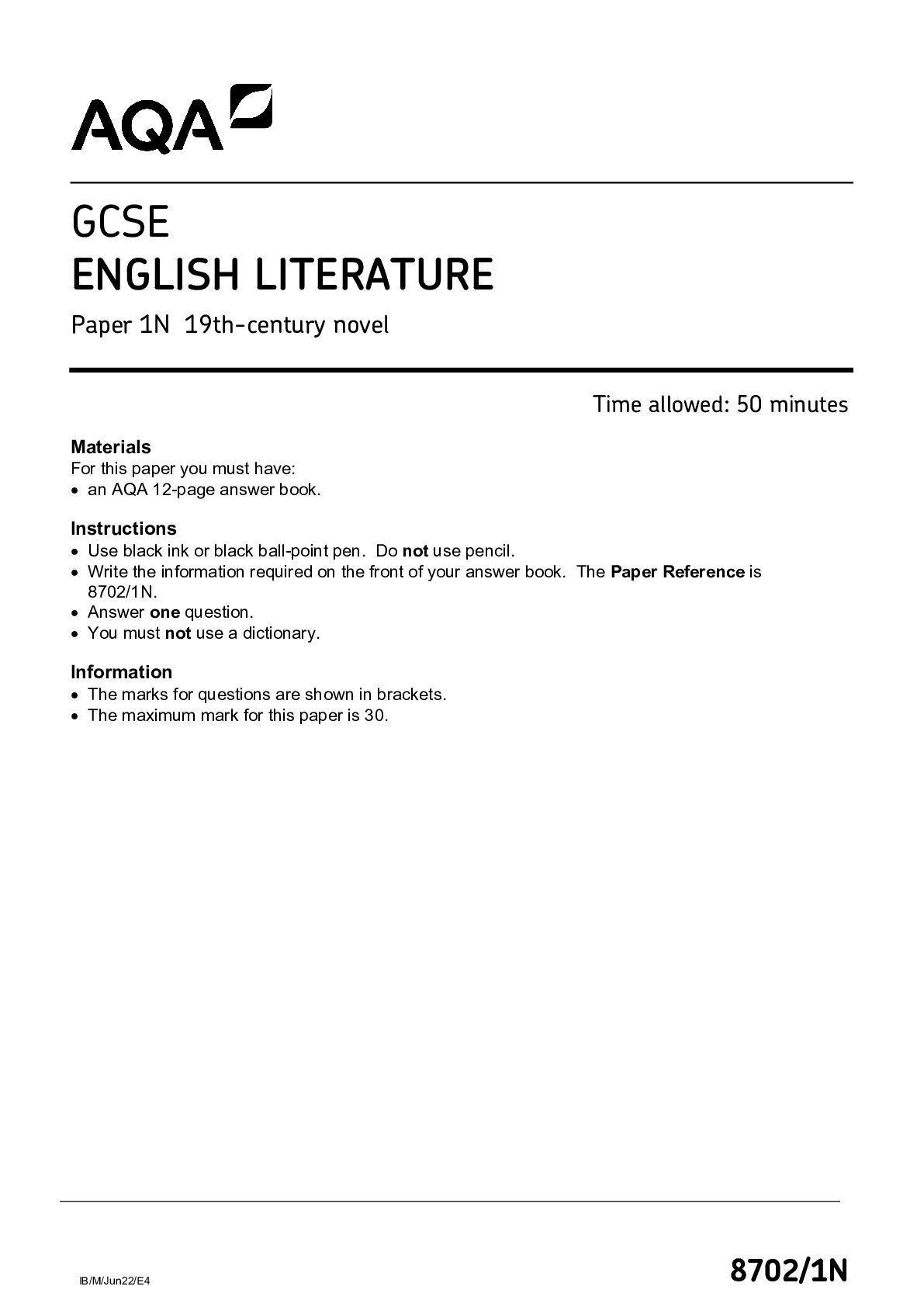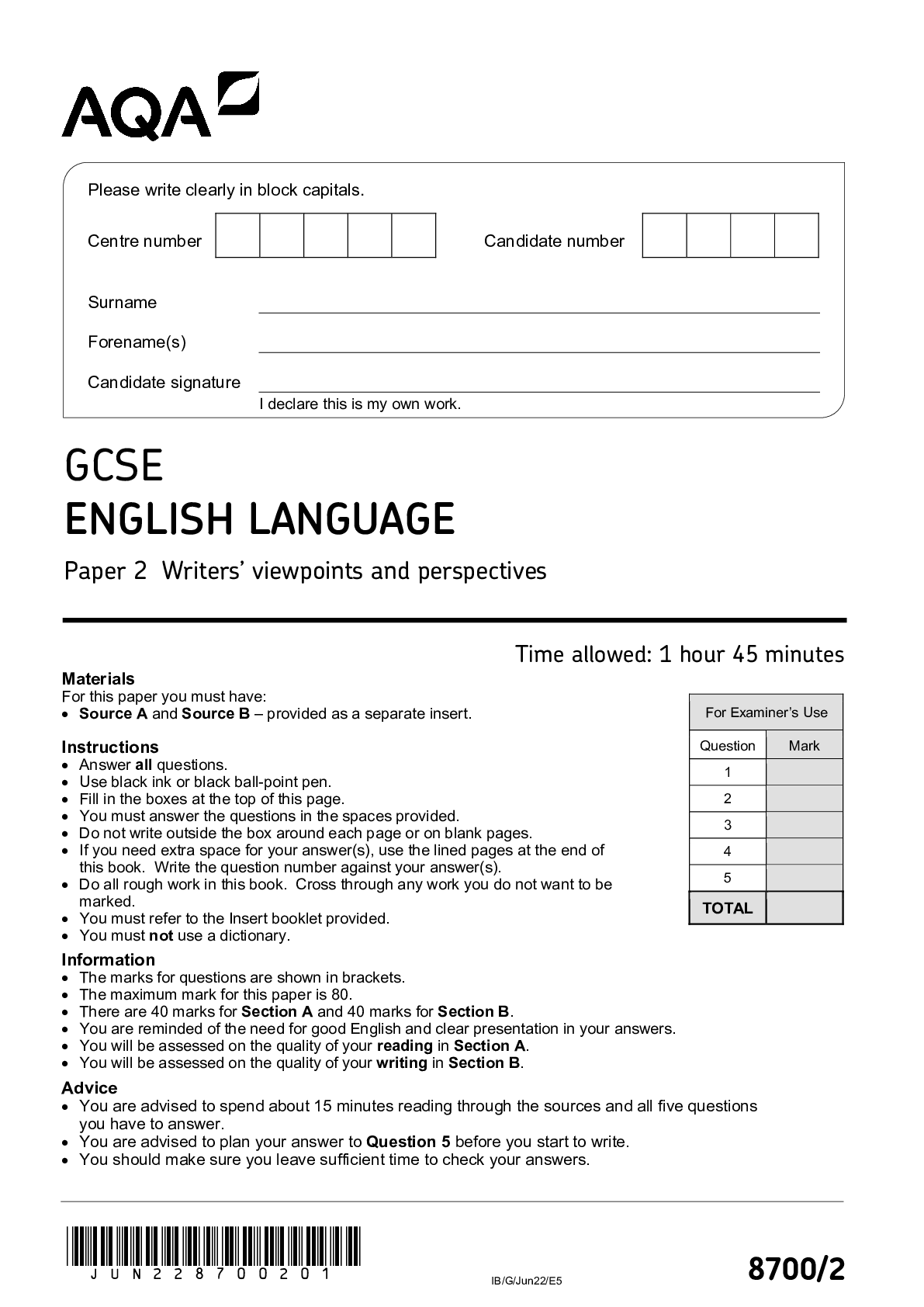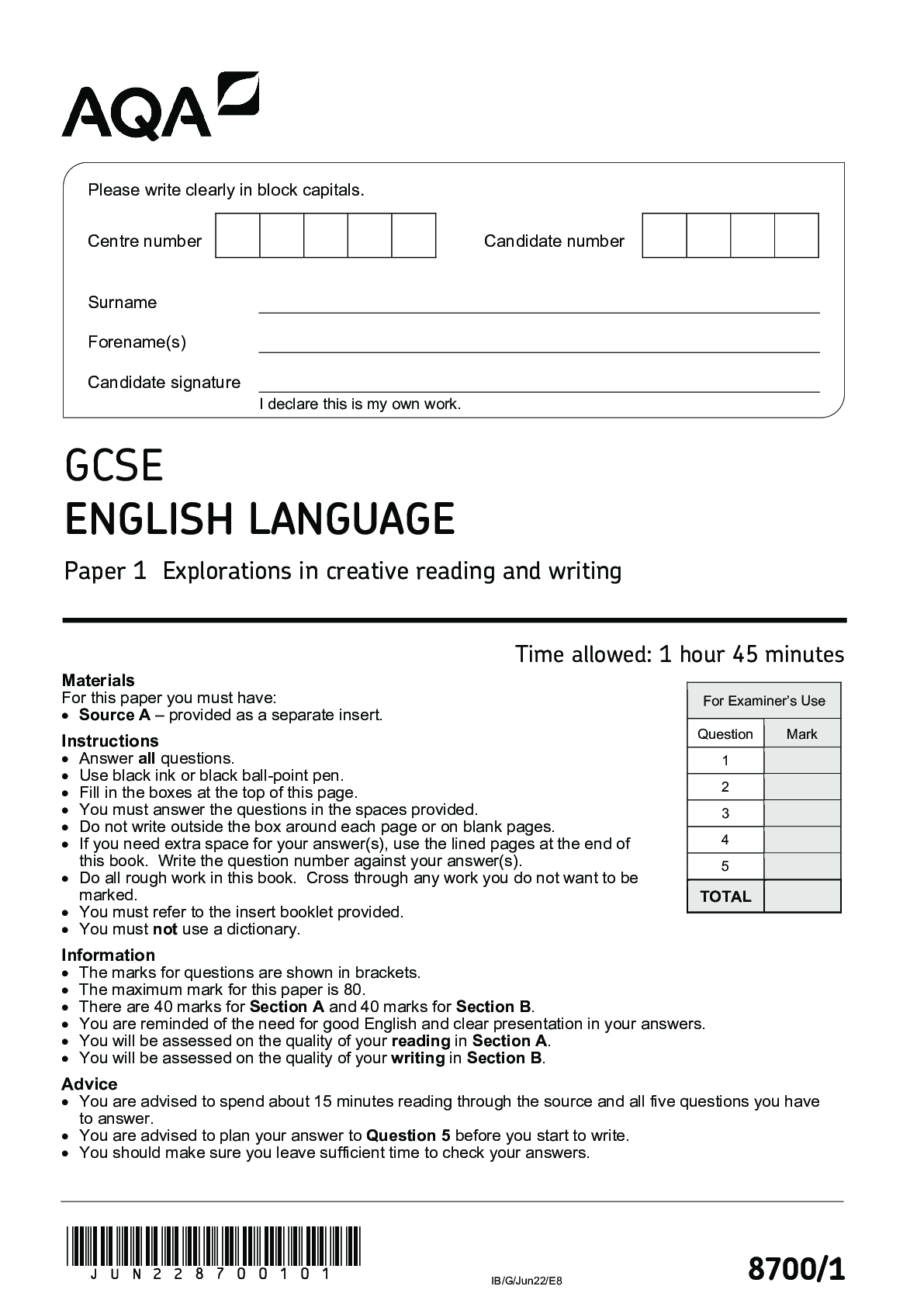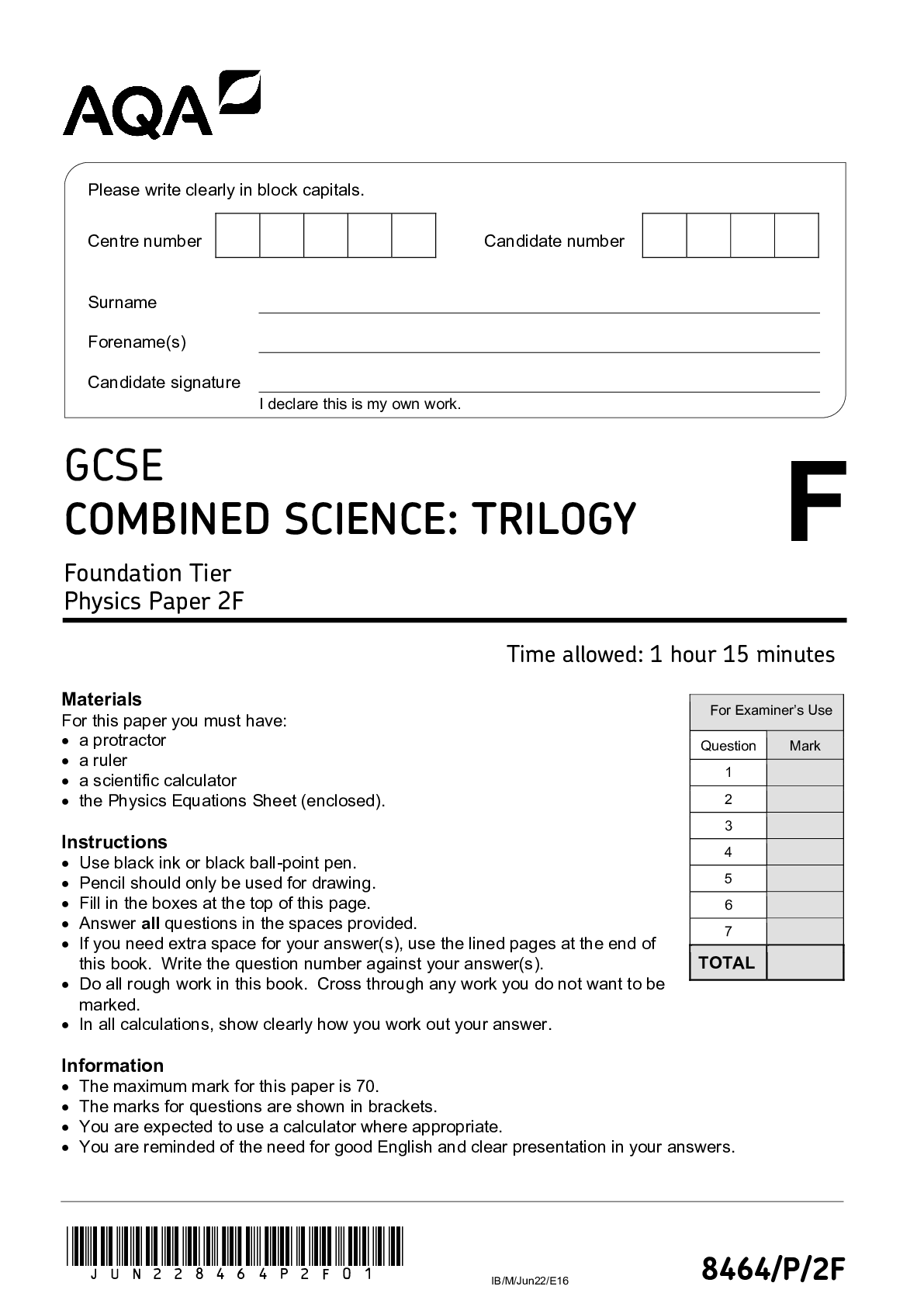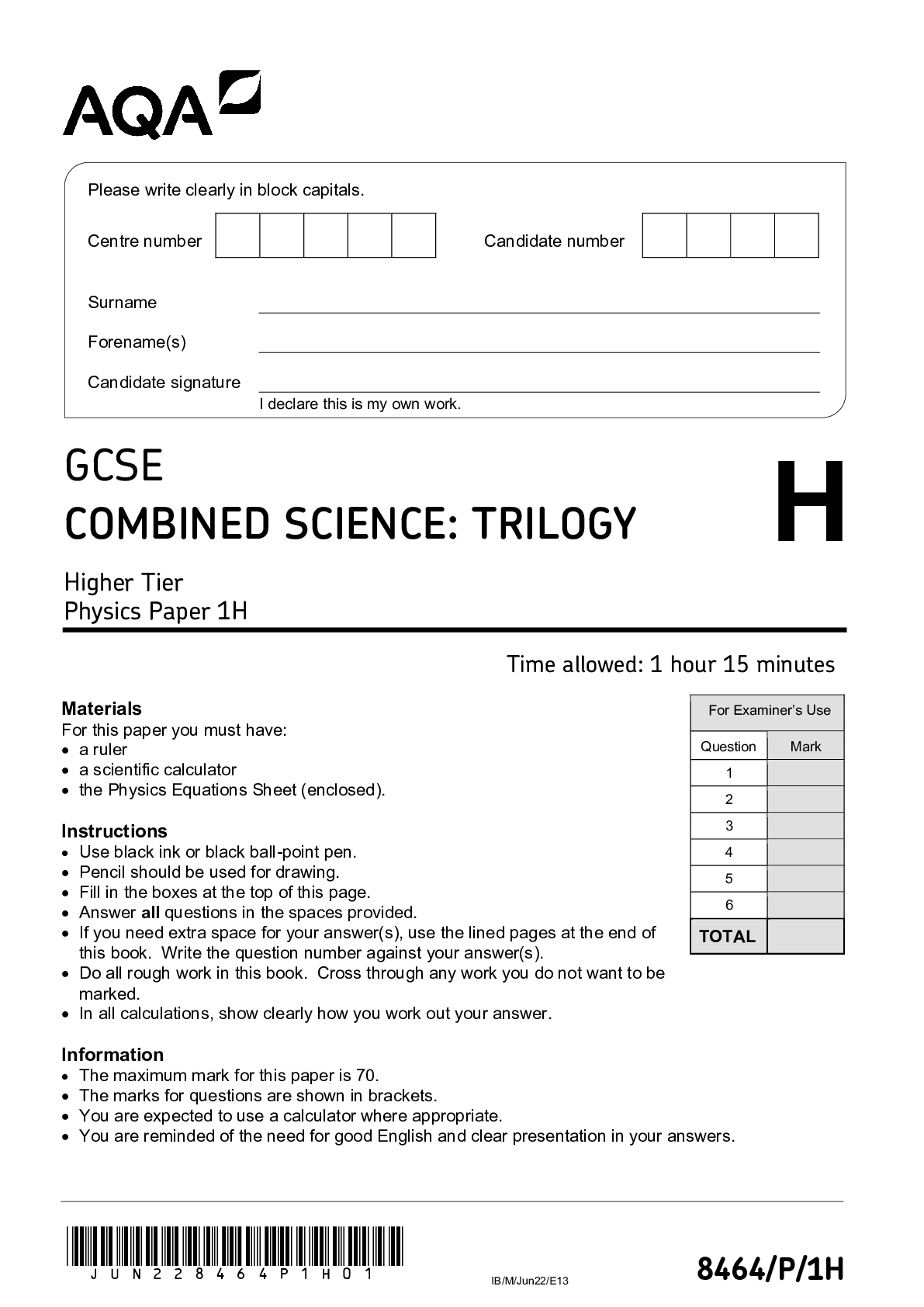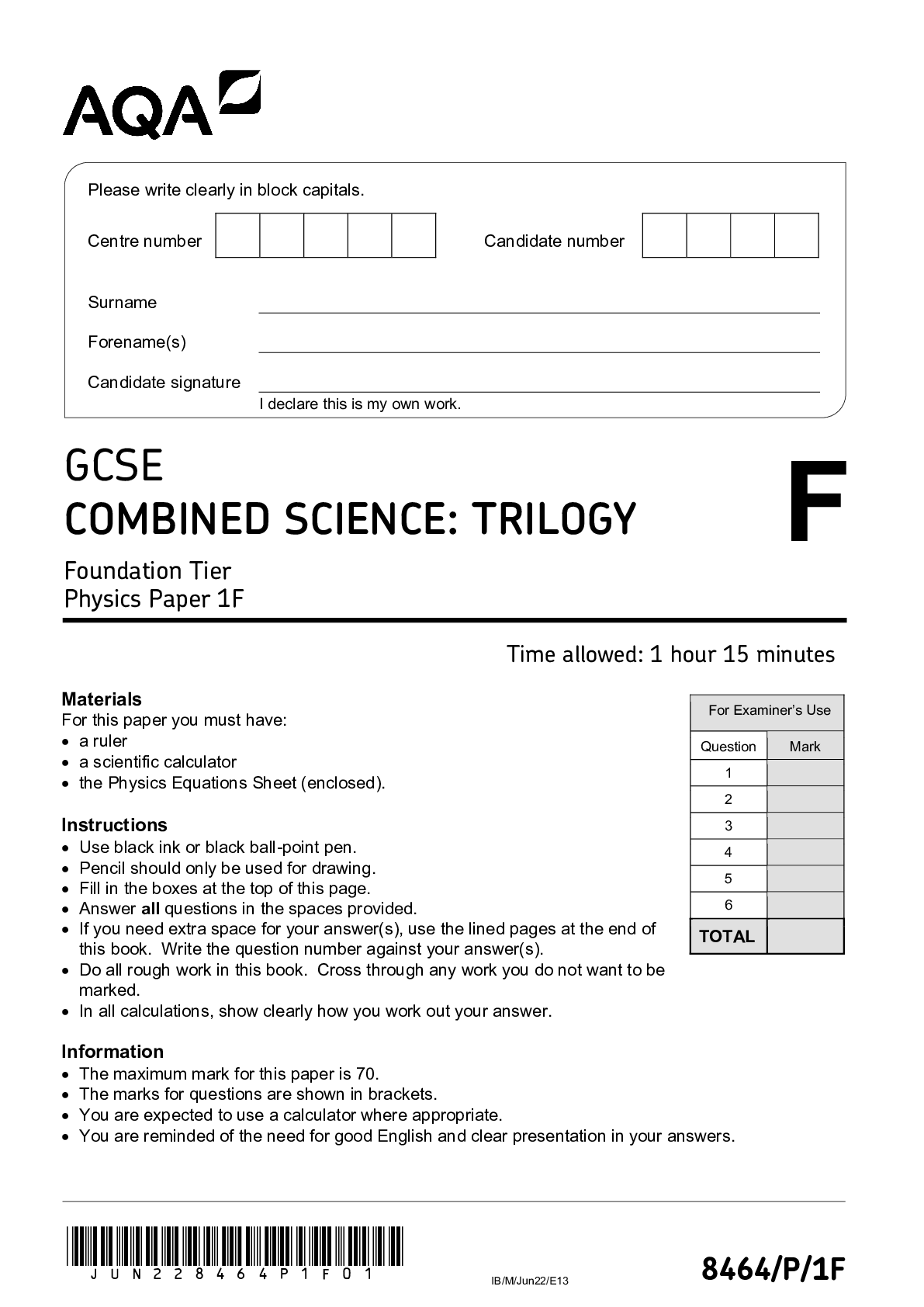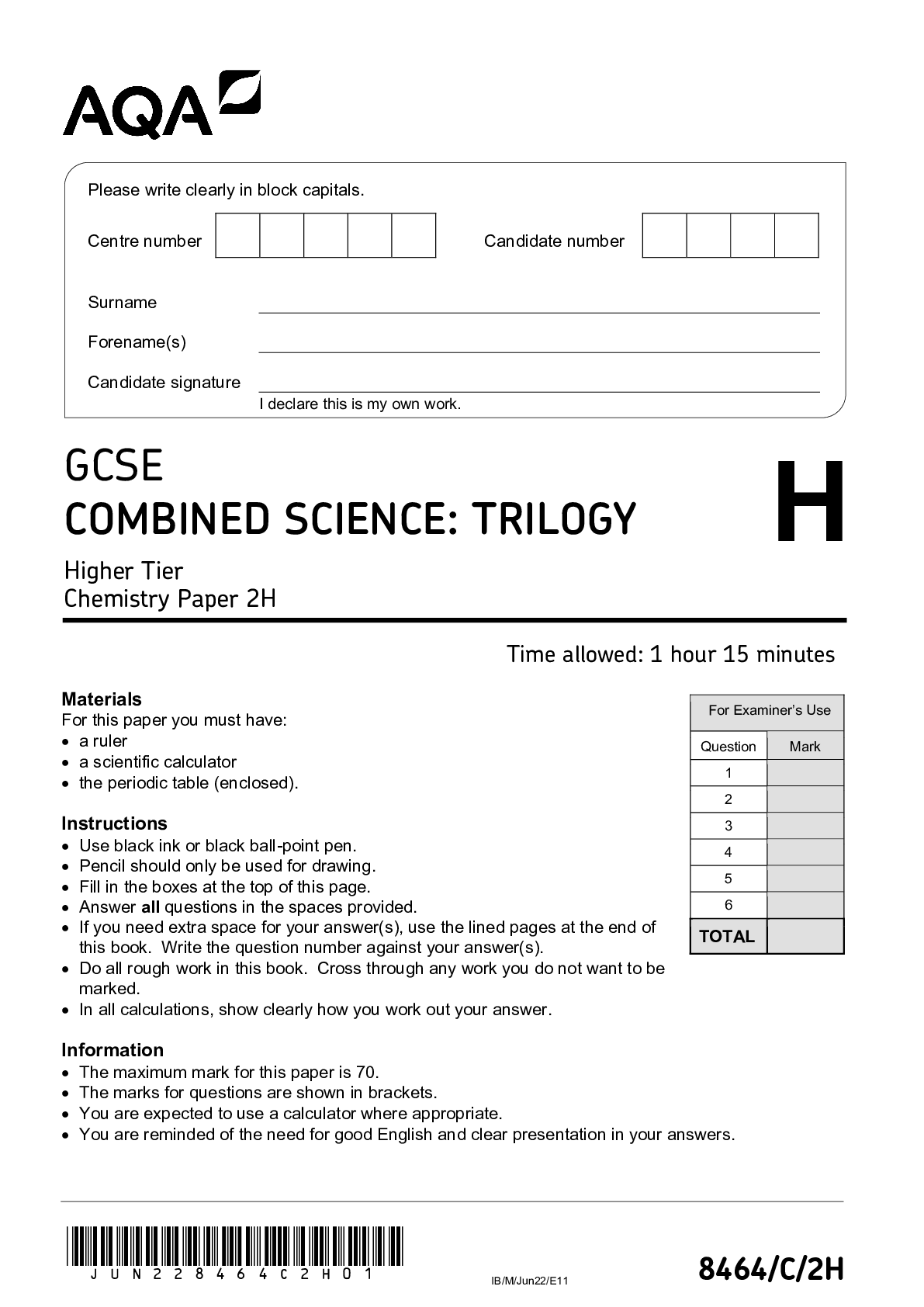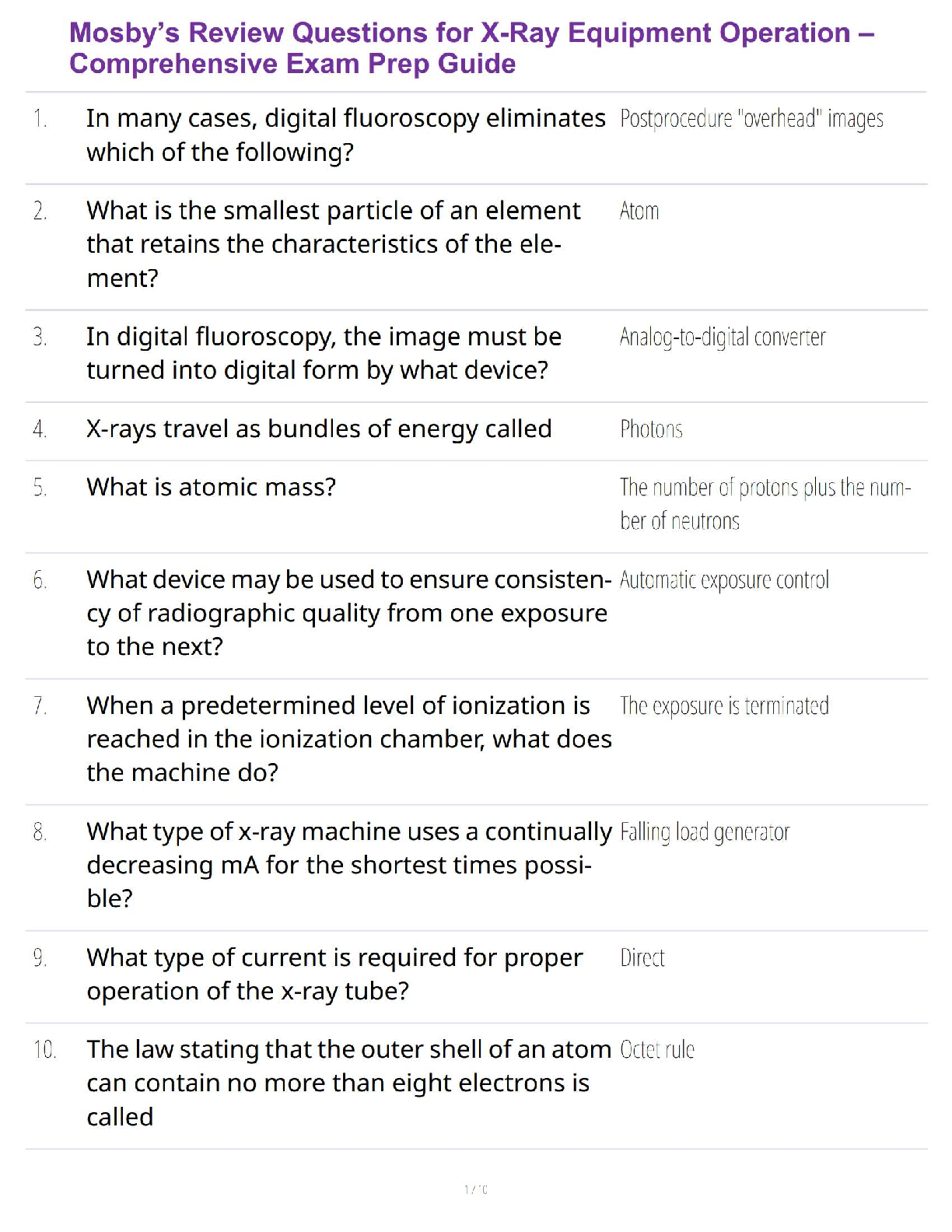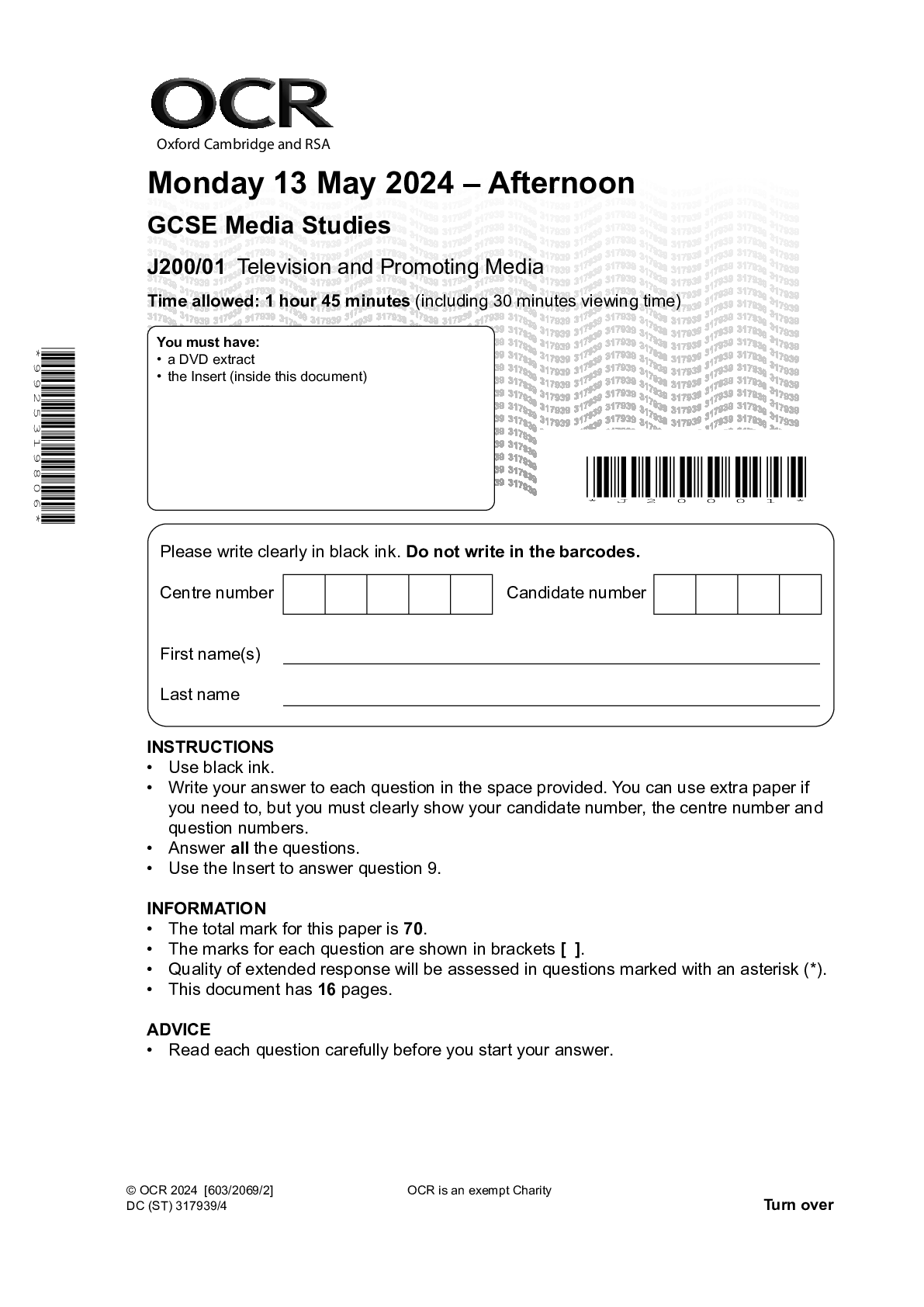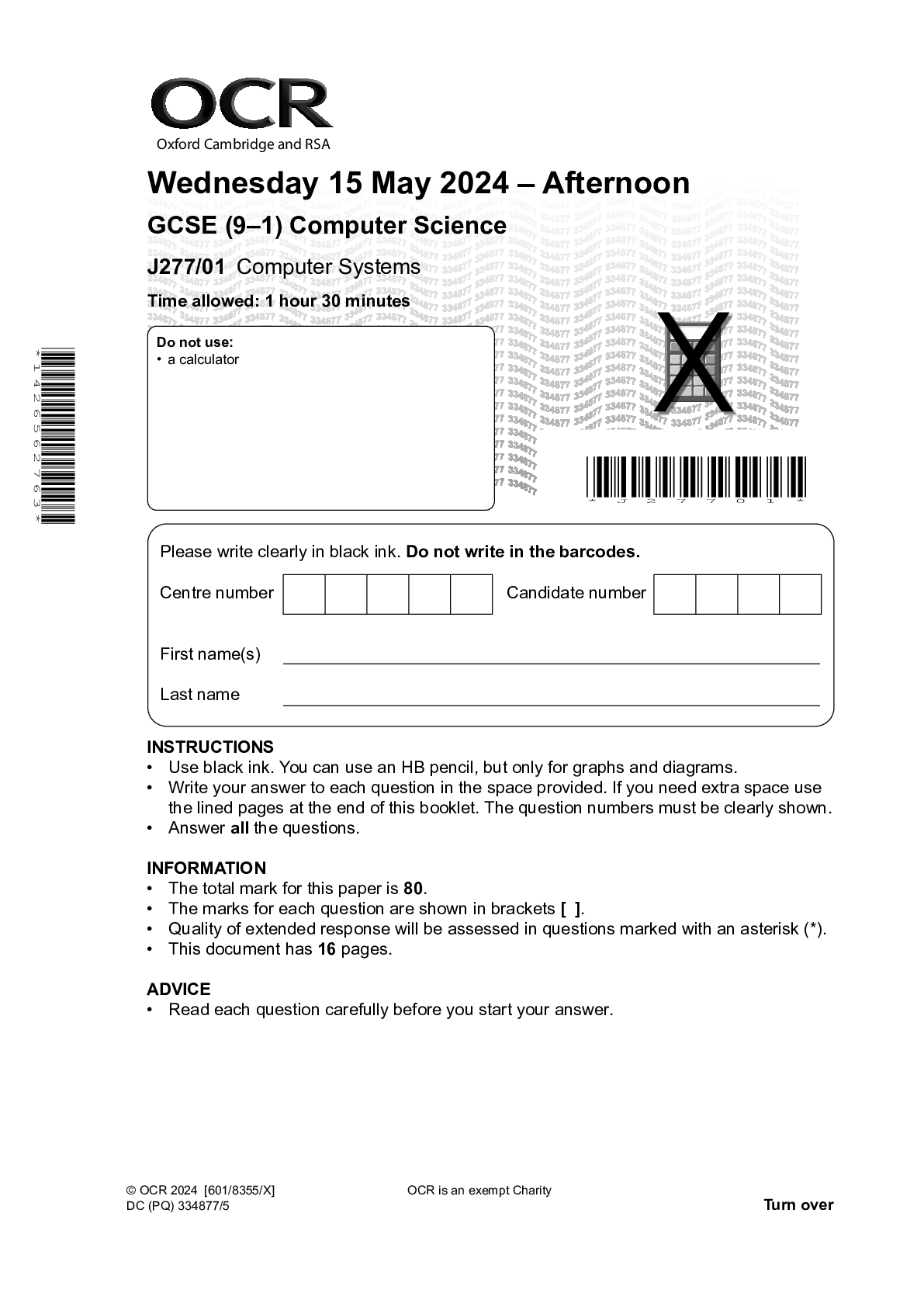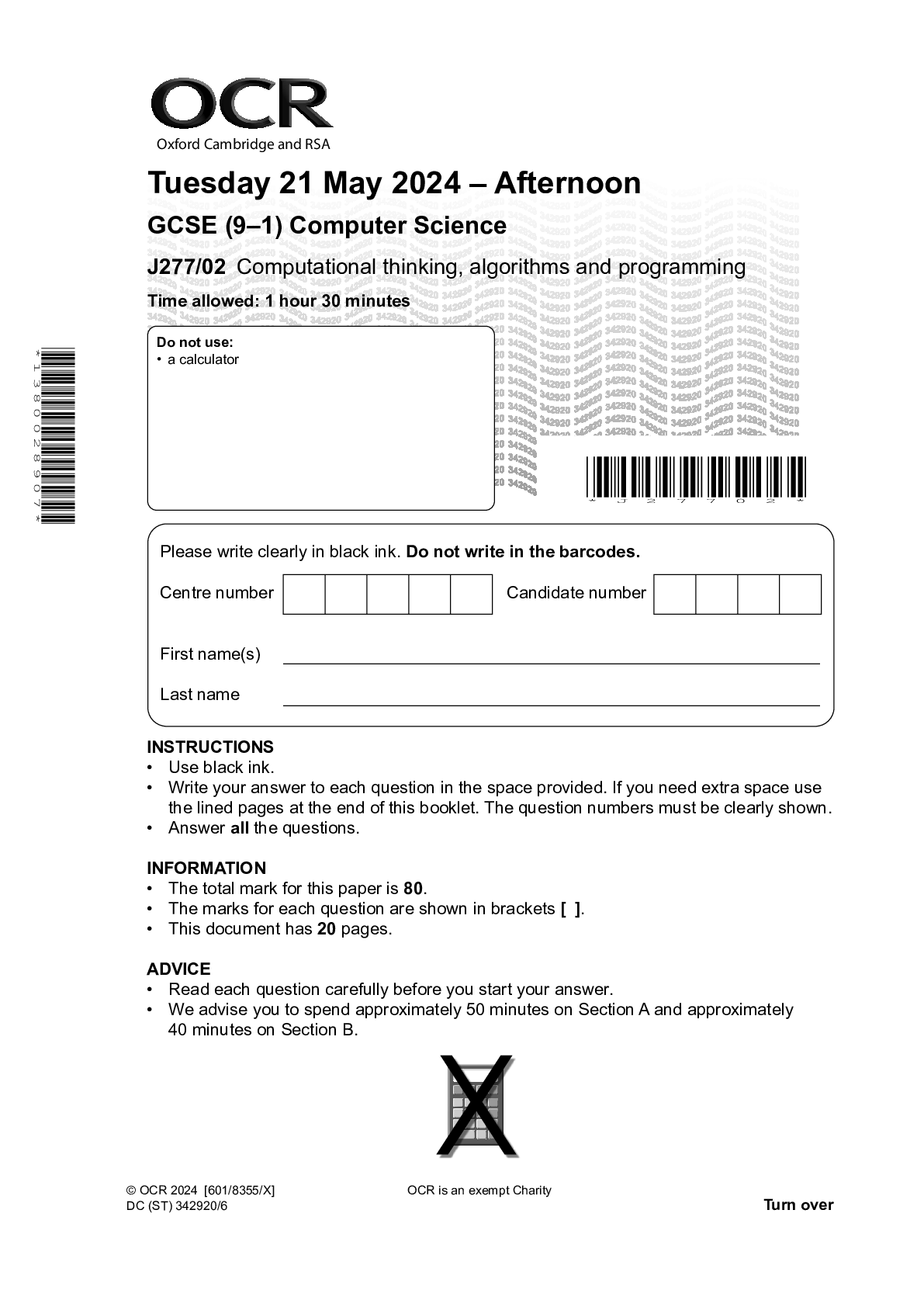Chinese > QUESTION PAPER (QP) > Mark Scheme (Results) Summer 2022 Pearson Edexcel GCSE In Chinese (1CN0/4F) Paper 4: Writing (Founda (All)
Mark Scheme (Results) Summer 2022 Pearson Edexcel GCSE In Chinese (1CN0/4F) Paper 4: Writing (Foundation Tier
Document Content and Description Below
Mark Scheme (Results) Summer 2022 Pearson Edexcel GCSE In Chinese (1CN0/4F) Paper 4: Writing (Foundation Tier) Edexcel and BTEC Qualifications Edexcel and BTEC qualifications are awarded by Pear ... son, the UK’s largest awarding body. We provide a wide range of qualifications including academic, vocational, occupational and specific programmes for employers. For further information visit our qualifications websites at www.edexcel.com or www.btec.co.uk. Alternatively, you can get in touch with us using the details on our contact us page at www.edexcel.com/contactus. Pearson: helping people progress, everywhere Pearson aspires to be the world’s leading learning company. Our aim is to help everyone progress in their lives through education. We believe in every kind of learning, for all kinds of people, wherever they are in the world. We’ve been involved in education for over 150 years, and by working across 70 countries, in 100 languages, we have built an international reputation for our commitment to high standards and raising achievement through innovation in education. Find out more about how we can help you and your students at: www.pearson.com/uk Summer 2022 Question Paper Log Number P69549 Publications Code 1CN0_4F_MS_2022 All the material in this publication is copyright © Pearson Education Ltd 2022 General Marking Guidance • All candidates must receive the same treatment. Examiners must mark the first candidate in exactly the same way as they mark the last. • Mark schemes should be applied positively. Candidates must be rewarded for what they have shown they can do rather than penalised for omissions. • Examiners should mark according to the mark scheme not according to their perception of where the grade boundaries may lie. • There is no ceiling on achievement. All marks on the mark scheme should be used appropriately. • All the marks on the mark scheme are designed to be awarded. Examiners should always award full marks if deserved, i.e. if the answer matches the mark scheme. Examiners should also be prepared to award zero marks if the candidate’s response is not worthy of credit according to the mark scheme. • Where some judgement is required, mark schemes will provide the principles by which marks will be awarded and exemplification may be limited. • When examiners are in doubt regarding the application of the mark scheme to a candidate’s response, the team leader must be consulted. • Crossed out work should be marked UNLESS the candidate has replaced it with an alternative response. GCSE Chinese Foundation tier Paper 4 Mark scheme General guidance on using levels-based mark schemes Step 1 Decide on a band • You should first of all consider the answer as a whole and then decide which descriptors most closely match the answer and place it in that band. The descriptors for each band indicate the different features that will be seen in the student’s answer for that band. • When assigning a band you should look at the overall quality of the answer and not focus disproportionately on small and specific parts of the answer where the student has not performed quite as well as the rest. If the answer covers different aspects of different bands of the mark scheme you should use a ‘best fit’ approach for defining the band and then use the variability of the response to help decide the mark within the band, for example if the response is predominantly band 5–8 with a small amount of band 9–12 material, it would be placed in band 5–8 but be awarded a mark near the top of the band because of the band 9–12 content. Step 2 Decide on a mark • Once you have decided on a band you will then need to decide on a mark within the band. • You will decide on the mark to award based on the quality of the answer; you will award a mark towards the top or bottom of that band depending on how students have evidenced each of the descriptor bullet points. • You will modify the mark based on how securely the trait descriptors are met at that band. • You will need to go back through the answer as you apply the mark scheme to clarify points and assure yourself that the band and the mark are appropriate. Assessment criteria for the Foundation tier Question 1 – Foundation tier (12 marks) For this question, students’ work is marked by Pearson using assessment criteria given in two mark grids: • communication and content • linguistic knowledge and accuracy. The student is expected to produce 20–30 characters for this task. The number of characters is approximate and students will not be penalised for writing more or fewer characters than recommended in the character count. All work produced by the student must be marked. Question 1: communication and content mark grid – Foundation tier Mark Descriptor 0 No rewardable material 1–2 • Some relevant, basic information without development • Uses language to inform, give short descriptions and express opinions with limited success • Uses limited selection of common, familiar vocabulary and expression with frequent repetition 3–4 • Mostly relevant information, minimal extra detail • Uses language to give short descriptions, simple information and opinions with variable success • Uses small selection of common, familiar vocabulary and expression with some repetition 5–6 • Relevant information with occasional extra detail • Uses language to give short descriptions, simple information and opinions with some success • Uses small selection of common, familiar vocabulary and expression with little repetition Question 1: linguistic knowledge and accuracy mark grid – Foundation tier Mark Descriptor 0 No rewardable material 1–2 • Produces simple, short sentences in isolation • Limited accurate application of a small selection of straightforward grammatical structures, limited success in referring to present events; frequently errors prevent meaning being conveyed 3–4 • Produces simple, short sentences with little linking • Inconsistently accurate application of a small selection of straightforward grammatical structures, inconsistently successful reference to present events; often errors occur that hinder clarity of communication and occasionally prevent meaning 5–6 • Produces simple sentences with some linking • Accurate application of a small selection of straightforward grammatical structures, refers successfully to present events as appropriate to the task; occasionally errors occur that hinder clarity of communication Additional guidance Straightforward grammatical structures are considered to be: • repetitive, simple word order • short, simple sentences that use a repetitive range of common, high-frequency structures • simple ideas, opinions and thoughts that are expressed but which are not justified. Errors: the mark grid describes the frequency of errors and the impact that errors have on coherence. Errors that do not hinder clarity: • errors that do not affect meaning, for example missing measure words • infrequent errors that do not distract the reader from the content and which result in coherent writing • minor errors in characters such as a misformed stroke in a character, or errors of proportion/balance/alignment between the radicals within a character. Errors that hinder clarity: • errors that make writing difficult to understand immediately (even if the meaning is eventually understood)/errors that force readers to re-read in order to understand what is meant, for example incorrect timeframes, mismatch of subject and the possessive adjective • frequent errors hinder clarity as they will distract the reader from the content of the writing • errors in forming a character such as characters with an extra or missing stroke. Errors that prevent meaning being conveyed: • errors that mean the reader cannot understand the message • errors that convey the wrong message • errors that make it unclear who is carrying out the action, for example incorrect word order • using the wrong character with the same sound or major errors in forming a character, such as characters with an incorrect radical • mother-tongue interference. NB: these are examples only and do not constitute a finite list. Question 2 – Foundation tier (16 marks) For this question, students’ work is marked by Pearson using assessment criteria given in two mark grids: • communication and content • linguistic knowledge and accuracy. This question requires students to write in a formal style/register (see Additional guidance below). The student is expected to produce 40–50 characters for this task. The number of characters is approximate and students will not be penalised for writing more or fewer characters than recommended in the character count. All work produced by the student must be marked. Question 2: communication and content mark grid – Foundation tier Mark Descriptor 0 No rewardable material 1–2 • Limited information given likely to consist of single words and phrases • Limited ability to use language to present simple facts, inform and note down key points; expression is frequently constrained and communication often breaks down • Repetitive use of a limited selection of common words and phrases • Knowledge of register and style is rarely evident because of restricted use of vocabulary and expression 3–4 • Some brief information given, basic points made without development • Occasional success in using language to present simple facts, information and to note down key points but expression is sometimes constrained and communication occasionally breaks down • Limited use of common, familiar vocabulary and expression with frequent repetition • Occasional appropriate use of register and style 5–6 • Some relevant information given appropriate to the task, basic points made with little development • Uses language with some success, to present simple facts, information and to note down key points, expression is occasionally constrained • Uses a small range of, common, familiar vocabulary and expression with some repetition • Mostly appropriate use of register and style, mostly sustained 7–8 • Relevant information given appropriate to the task, basic points made with some development • Uses language mostly with success, to present simple facts, information and to note down key points using simple ideas • Uses common, familiar vocabulary and expression with little repetition • Appropriate use of register and style sustained Additional guidance Register and style definition: Formal register and style –this includes language that students would use with adults in a formal context, for example teachers, employers, customers, officials. It would include avoidance of slang, over-familiar language, exaggeration, endearments, writing in a conversational style, inap [Show More]
Last updated: 2 years ago
Preview 1 out of 18 pages
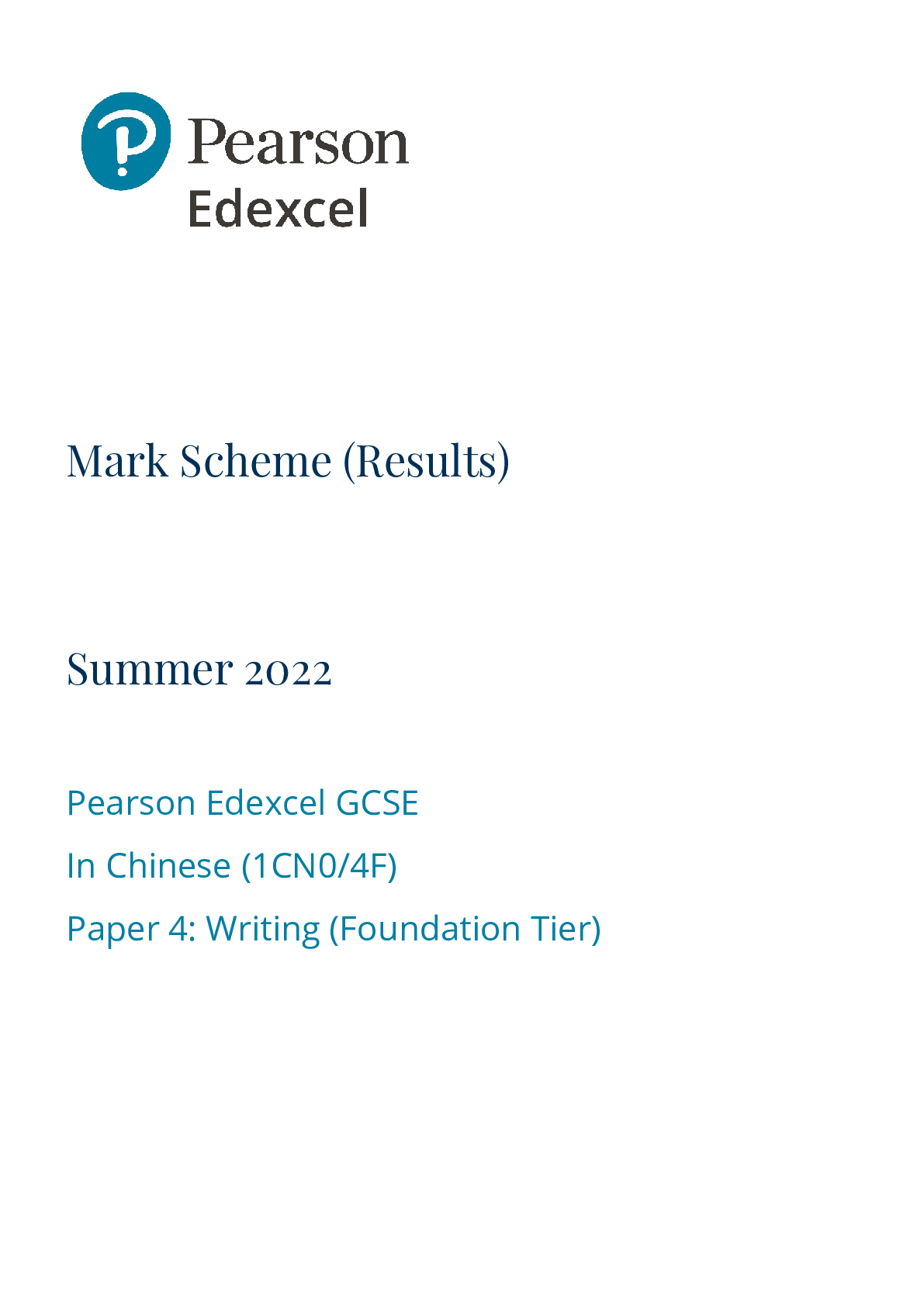
Buy this document to get the full access instantly
Instant Download Access after purchase
Buy NowInstant download
We Accept:

Reviews( 0 )
$7.00
Can't find what you want? Try our AI powered Search
Document information
Connected school, study & course
About the document
Uploaded On
Apr 03, 2023
Number of pages
18
Written in
All
Additional information
This document has been written for:
Uploaded
Apr 03, 2023
Downloads
0
Views
223

